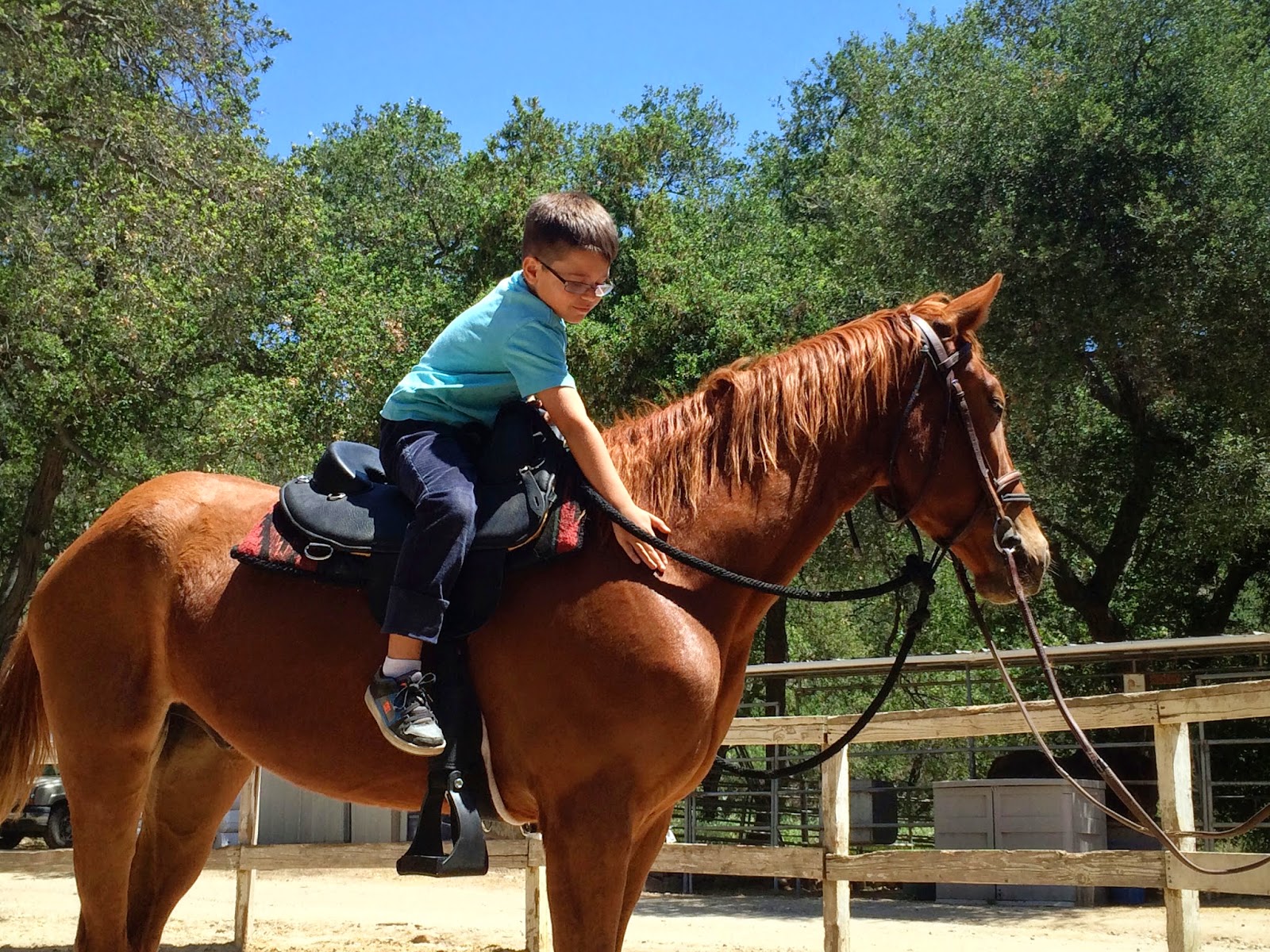I set out for an easy ride in my old bosal (meaning thing that goes around nose to control horse, no bit) that I've owned for about 10 years. Bosals have a cool tradition, they were used by the Vaqueros who practiced natural horsemanship in California and Mexico. I only recently learned of the Vaquero tradition, but I suggest anyone interested in horses, California history, or history in general should research the tradition. The Vaqueros would start young horses in the bosal and move to a spade bit, which looks medieval but isn't actually that terrible (but still very harsh), it's designed to put pressure on the tongue and that high part in the middle puts pressure on the soft pallet. The goal being that only a slight touch of the reins would direct a well trained horse to do what you're asking...still not something I'd want in my mouth. I do like the idea of the bosal, however. This bosal I have doesn't do justice to the Vaquero tradition, I bought it for like $20 and it's built terribly, the nice bosals go for over $200. Someday soon I'll buy a nice bosal, but Calvin needs to get better trained in the bit first. The well made ones are terribly expensive, but worth the cost as they fit the nose better and create a more responsive horse.
I think he looks handsome in the cheap bosal though. You can tell it's poorly made because there are huge gaps around his nose between the bosal, it's also just cheap nylon and not leather/handwoven material. Also whenever he'd shake his head or rub it would half fall off his face...probably not safe...
Despite the bosal being poorly made, he was very responsive in this bosal too and seemed to enjoy it. Although he likes anything that makes stealing snacks on trail easier.
We started our ride solo, but then came across one of the regulars, J. She has an older thoroughbred horse. He's very handsome but has been having problems with his legs and feet. Anyway, she recently started riding again and her horse is "afraid" of the road down the property. Since her horse is "afraid", she wanted Calvin and I to go with her to the gate. I say "afraid" because it was clearly her that was afraid, not her horse. Horses pick up on our energy and fear and start misbehaving, hence why her horse had problems with the road. How can they trust a leader that isn't confident? It was clear he wasn't afraid when we headed home and he was perfectly fine on the road, but whatever, not my place to train her or her horse. Either way it gives Calvin more experience with new horses.
Here we are leading the pack. Mikey, J's horse, is Calvin's older color-twin. Their coat colors are nearly identical, except poor Calvin's tail is shorter :(
Here is Mikey in front leading the way, Calvin loves to follow vs. lead as you can see by his relaxed ears.
Oops a little off course! Calvin tail swooshes in anger due to me not letting him eat the grass.
Another day I rode Calvin for some arena work. I realized I was asking too much of him too soon. We needed to go back to basics of bridle-work. I was trying to do the basics as well as collect him, but I realized that I should just work on basic turning and stopping with the bit so he learns to carry himself. Once I stopped trying to collect him, he was very responsive to the bit and stopped fighting me. This picture shows collection (top) vs non-collection, you can see that the horse uses their hind end more (the "engine" of a horse) in the top picture, also their neck is more curved are they are more balanced. Anyway, in order to achieve collection horses have to be very responsive to the bit, which he is, but trying this too soon was creating a horse that ignores the bit because he didn't know what to do. By not worrying about collection yet, we can just focus on slowing down, stopping, and turning until he has those mastered. Once I stopped trying to collect, he was a different horse. I could lightly touch the reins and he'd do what I was asking immediately, it was an "ah ha!" moment for both of us. Riding is all about being humble and trying new avenues of communication...just like human relationships :)
After the ride I checked Calvin's sweat marks for saddle fit. If a saddle doesn't fit correctly, there will be dry/rub spots. I received my new saddle pad that goes with my new saddle. My saddle is treeless, which means that it moves more freely and doesn't have a fiberglass or wooden "base" under the seat that holds it firmly in place. The benefit of a treeless saddle is that it's way more comfortable for horse and rider, but it also flexes more when the horse turns as their spine curves. The only downside to treeless saddles is that there is not a tree to keep the saddle off the horse's spine. Therefore you have to buy an expensive pad that keeps the treeless saddle off the spine.











































